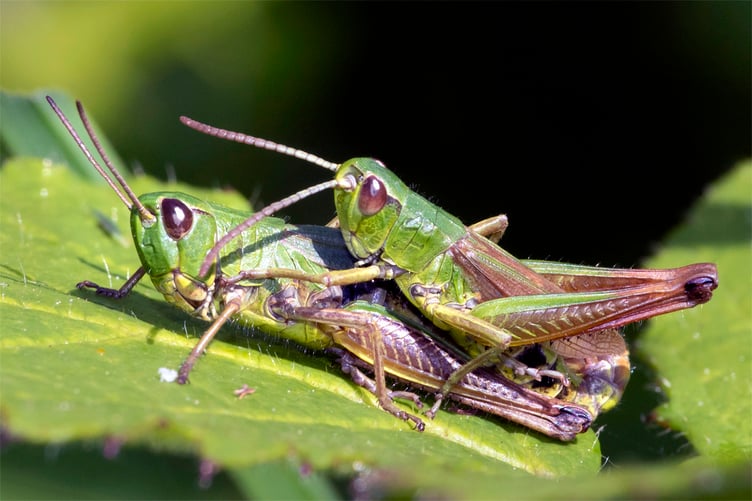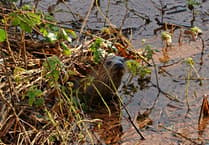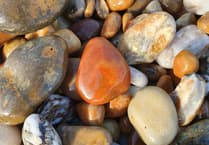Grasshoppers are a classic sign of summer, although for a few years I had been wondering why they don’t ‘sing’ anymore. Apparently, that is an age related condition.
Their song is produced by rubbing a hind leg against the wing edge. Each species will produce its own song and females are different from males.
Grasshoppers and crickets belong to the order of Orthoptera which means ‘straight-winged’. There are about 36 established breeding species in Britain with a few regular migratory visitors.
The simplest way to separate crickets from grasshoppers is to examine their antennae. Grasshoppers have shorter and stouter antennae unlike the very long thin antennae of crickets. Female crickets also have a long ovipositor. Grasshoppers are vegetarians while Bush Crickets will also consume other insects.
They can be found in wildlife friendly gardens although I wonder how many get minced up by grass cutting machinery.
In the spring, grasshoppers and crickets hatch and become tiny nymphs (juveniles) which go through several recognisable stages as they grow.
Grasshoppers often have considerable variation in colour within the same species, ranging from plain yellowish green, sometimes with pinkish or reddish orange tints, to various shades of brown.
Most grasshoppers in the South Hams area will be Meadow or Field Grasshoppers.
Identification can often be obtained by examining differences to the top edges of the thorax. This will be almost straight for Meadow Grasshoppers but sharply indented in Field Grasshoppers. The less common species have slightly different variations which can make them tricky to identify.
Adult Great Green Bush Crickets are long winged and should be obvious by their large size (up to 50 mm). I regularly find them near the coast and at a few inland sites like Woodleigh Wood.
Speckled Bush Crickets have very short wings and obvious dark speckling on their bodies.
Dark Bush Crickets are stocky looking brownish grey insects with short wings which should be obvious. But, along the coast, look out for similar looking uncommon long winged Grey Bush Crickets. I have found them at Bolberry Down and Prawle Point.
Oak Bush Crickets are mostly nocturnal and can occasionally be found in moth traps. I recently saved one from a water trough at Andrews Wood.
Coneheads, which are rather localised, appear long and slim with a dark top stripe, but separating the two species can be tricky.
Grasshoppers are often found in long grass hiding behind a grass stem but peeping around the stem to look at you. This begins what I call the grasshopper dance. As you move to get a better view of them they will also move around their stem, always keeping themselves on the other side of the stem.
Groundhoppers are a variable brownish colour and resemble grasshoppers although they do not produce a song. Common Groundhoppers have body length wings unlike the longer winged Slender Groundhoppers.





Comments
This article has no comments yet. Be the first to leave a comment.